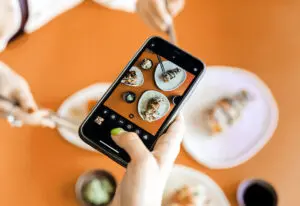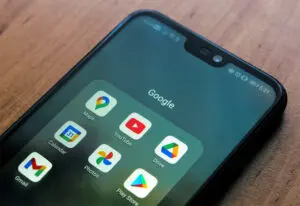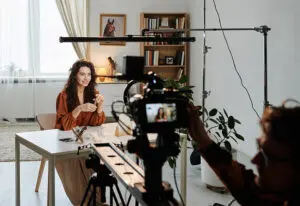
Interview with the Founder: How to Achieve Business Growth Amidst a Crisis
It’s been seven months since COVID-19’s first wave and the ensuing stay-at-home orders, quarantines, and new regulations. During this time, businesses big and small have suffered the crisis’s impacts––declining sales, interest, and overall motivation. We sat down with Savy’s founder, Christina Brown, to discuss how to achieve business growth during a crisis.
Introducing our founder, Christina Brown
As Savy’s Creative Director and Founder, Christina Brown is no stranger to hard work, effective marketing strategies, and creative ingenuity. Her 25-plus years of experience in the field have made her a pioneer of the digital revolution––from the dot com boom to today’s digital takeover. Before starting Savy in 2007, Christina used her business degree to help offshore brands meet their global marketing objectives. After settling in Bend and opening the agency, the then scrappy team worked to help brands big and small have effective and lasting marketing while utilizing the newest digital practices.
Give us a little background of Savy. When did you open your doors? What was the economic landscape like? What was the brand landscape like?
Christina Brown (CB): January 2007 Savy was born. The economy went from very strong to a major crash that year. Local agencies were building multi-level facilities, hiring fast, holding parties, and taking market share, and then the bubble popped. [Local agencies] Citrus and Brand Navigation went out. Not too much later, TBD went out. Some of the latter fallout was from traditional advertising models failing to move to the new digital landscape. Facebook came to the market, and we went to Zuckerberg’s talks as he traveled around marketing his new platform.
Savy began as an integrated marketing agency and transitioned to a full-service digital agency as digital took over. There was a while that “green” was all the trend, and we rode it by helping position green brands. Green eventually fell out and what remained was the digital elements of being paperless, the push to digital advertising versus traditional, and the move to the web. We were the first in Bend to begin custom WordPress development and held the top positioning of ‘WordPress’ and ‘integrated marketing’ for the first several years.
How did the recession impact you?
CB: We’re no stranger to disruption. We’ve always been agile with limited overhead, so we were able to take market share of firms who were not and run with the business through our drive and innovation. We were always able to stay ahead of it and grow organically and naturally, so we never were really affected. Naturally, there were many, many sleepless nights of doing what it took and generating sweat equity and trust with clients.
Do you see similarities between then and the current crisis?
CB: The current crisis has changed customer behavior in a way that was different than then; however, we’re still relatively new in COVID, so much is still to be seen. We don’t know exactly how much it will impact consumer choice and confidence moving forward. We will, however, get ahead of it and find new opportunities to provide value.
We’re seeing an uptick in queries like ‘lead gen’ and ‘lead generation,’ which makes sense, as brands now need to figure out how to capture their market and nurture conversion. They also have no blueprint for how to do that in this vastly different landscape. So I think an opportunity for Savy will be our ability to use data to learn new behaviors and provide services to connect those with brands.
What’s your number one piece of advice for brands trying to navigate coronavirus uncertainty and achieve business growth?
CB: Challenge the status quo. That’s what innovative brands are good at, finding the opportunity to do something different and to do it better. Now is no different. We just have to shift to where we can find opportunities to develop. With brick and mortar closures, websites will likely become the primary home for brands to compete on. Websites maintain safe distances and can act as centerpieces of brand communication. Not only do brands have to sell, convert, generate awareness, and generate business, but they now will have to follow stringent protocol, as well as reassure, inform, and support customers. Two years ago, I thought we were moving to a brandless society. Now, I think it’s quite the opposite. When trust is paramount, brands can regain positions of trust.
Do you have any predictions about the long term effects of the shutdown?
CB: One thing we do know is the metrics have changed. Traditional brand equity and how that was measured will be replaced in the shorter term with consumer trust and emotion, and that’s harder to track. But it makes it even more critical that humans are involved. Small groups like you’d find at a boutique group versus relying on silos and big data alone. More value should be given to creative testing. What resonates with people? What helps and what doesn’t? What are the new steps that are required to serve a market well? Follow these steps and track changes along the way, and brands can figure out the new normal for the clients and brands they serve.
One thing’s for sure: we have to narrow our focus to the present moment. Since the longer-term nature of COVID is clouding our view of tomorrow, potentially the best way to navigate is through a smaller lens. How can we serve today; what are the needs today? There will be fluctuations based on communities that are more affected, as well as openings and closures, etc., so if our short-term lens can inform our long-term strategies with lots of tiny checkpoints along the way, we may be able to predict how to proceed for each offering along the way.
Is there any silver lining or advantage to business growth during a crisis?
CB: Market attrition. Change always creates opportunities. Some categories will retract or even dissolve entirely, and others will grow or appear from thin air based on demand. Take advantage of the change by keeping an innovative mindset. Blue ocean strategies come from looking at what works and what doesn’t in a specific timeframe. What have we been doing that no longer serves us or is no longer a fit given market conditions and/or global situations? Brands can find opportunities to serve customers in new ways by gathering new market share and providing new services that provide value in new ways.
Final thoughts or other pieces of advice?
CB: Stay creative, be transparent, be honest, be ready to shift, and keep going. Those that don’t shift stay where they are and fall behind. Rethink your brand’s strategy and structure it to provide true meaning and value for users. The D2C market moves quickly. If your brand is serving consumers, make sure you’re ready to adapt to changing needs and mindsets. They’ll continue to move fluidly across channels and expect their needs to be met for the brands they support. This aspect is no different than its always been except that their needs are shifting. Listen and learn what they are and respond.
Business growth: learning from Savy’s origins
While it may seem like we are at the tail end of COVID, we may be in the beginning stages when it comes to its long-term impact on business growth. Savy’s origins during the ’07 recession helped to make the agency what it is today: agile, creative, and always up for a challenge.
Businesses both big and small can navigate crises like the Coronavirus Recession by staying on top of audience sentiment changes, delivering products, services, and messaging that’s timely and relevant, and challenging the status quo. Since 2007, Savy has used our experience with crisis marketing, digital practices, and creative agility to create lasting and memorable brands. We might be in unprecedented times, but that doesn’t mean we’re unprepared. Let’s move forward together.
Recent Posts
How to Rebrand Your Instagram for Better Engagement and Brand Recognition
Your Instagram presence can act as a beacon for brand recognition and customer engagement. It’s about painting a picture so compelling that your audience cannot help but be drawn to […]
Read MoreFrom Clicks to Conversions: The Science of High-Performing Digital Ads
The journey from interest to purchase is often paved with digital advertisements. However, not all digital ads are crafted equally. While some fade into the background, others command attention and […]
Read MoreBrand Consistency Examples That Will Make You Rethink Your Marketing Strategy
A consistent and strategic brand identity across all platforms is not just beneficial; it’s essential. By exploring real-world brand consistency examples, we uncover the immense power of maintaining a coherent […]
Read More3 Ways to Transform Blogs With SEO and Make Google Love Your Content
As marketers and business owners, our goal is to ensure the blogs we publish confidently stride into the spotlight of Google’s top search results. Achieving this requires great content, but […]
Read More



